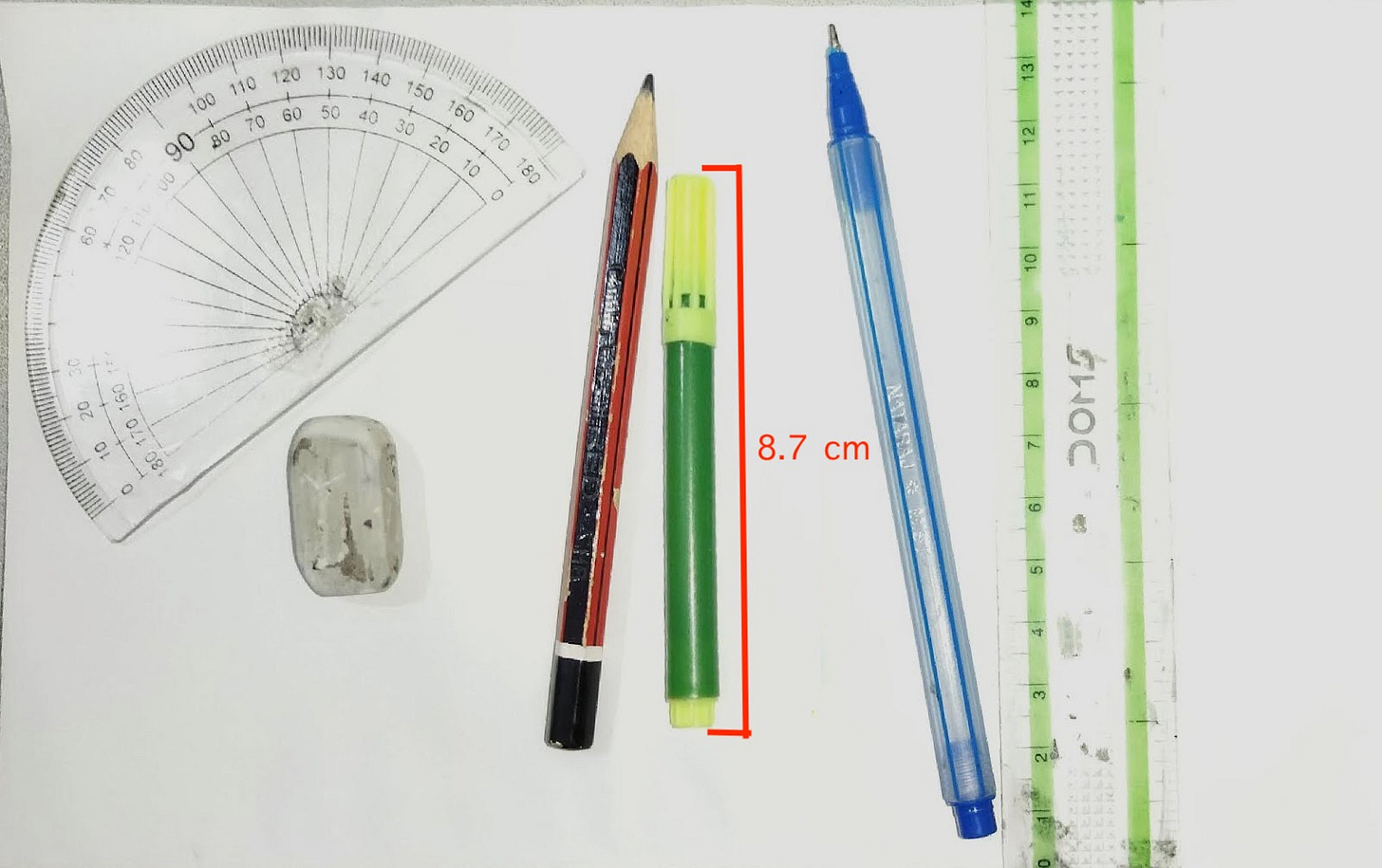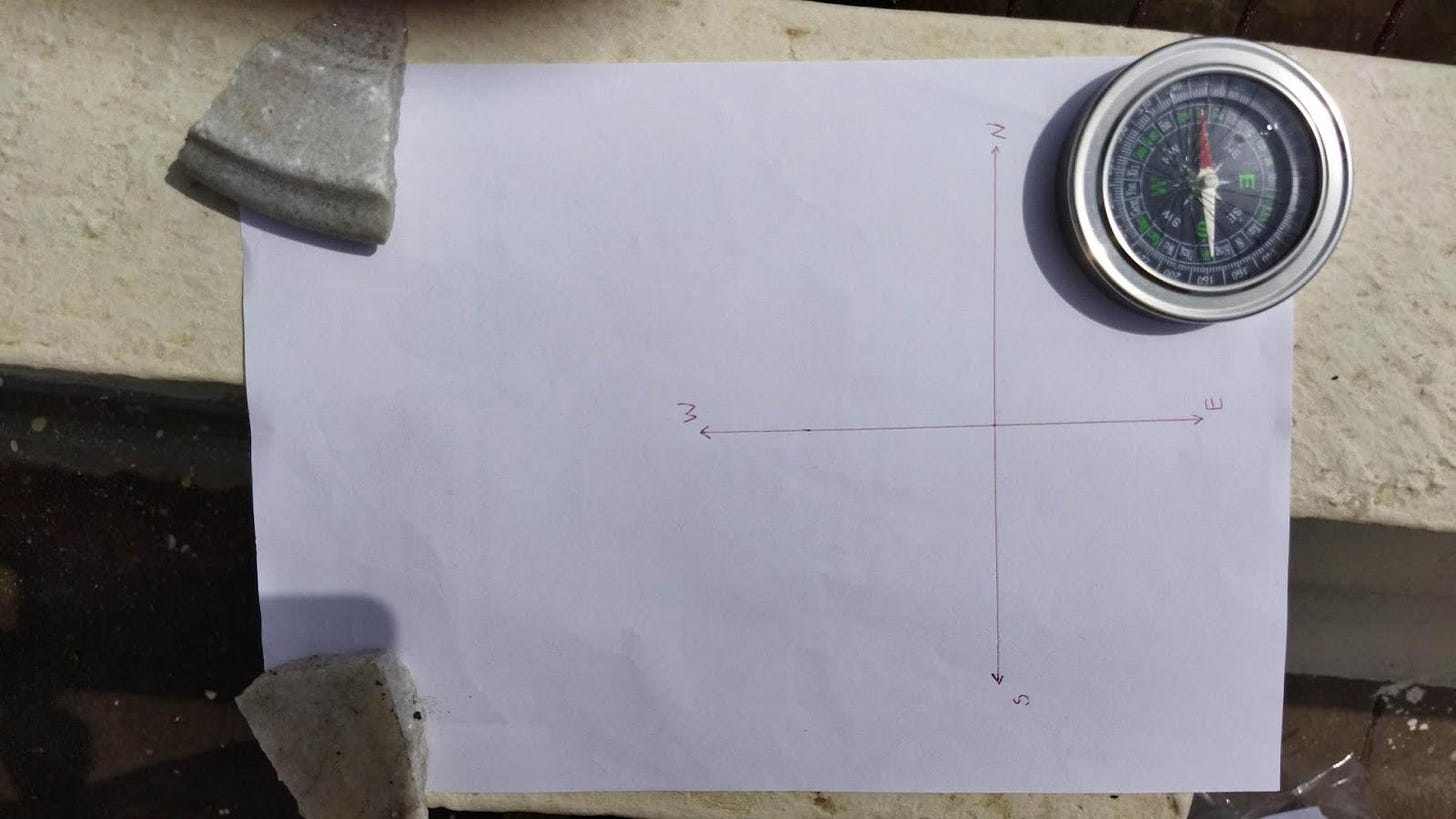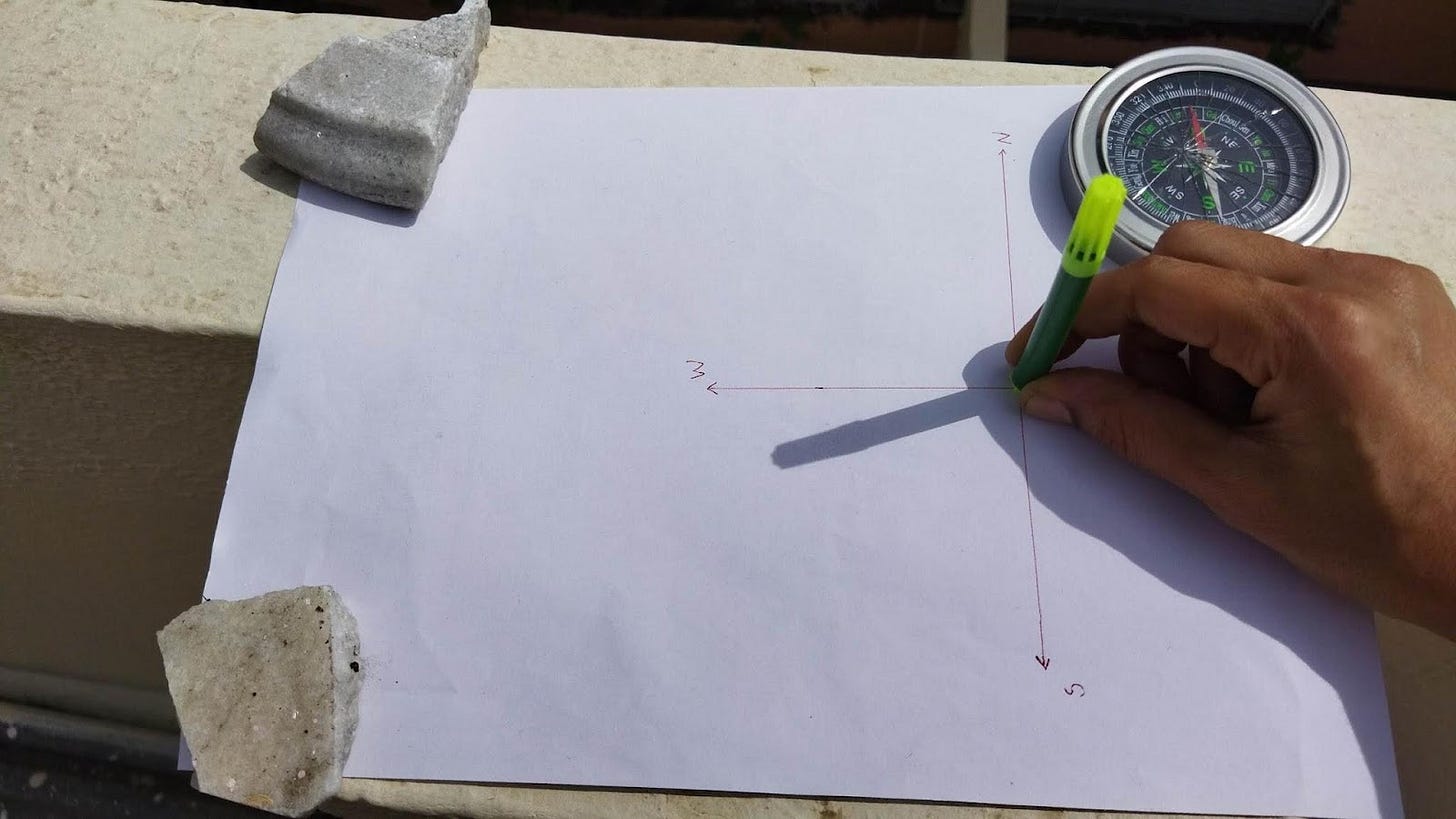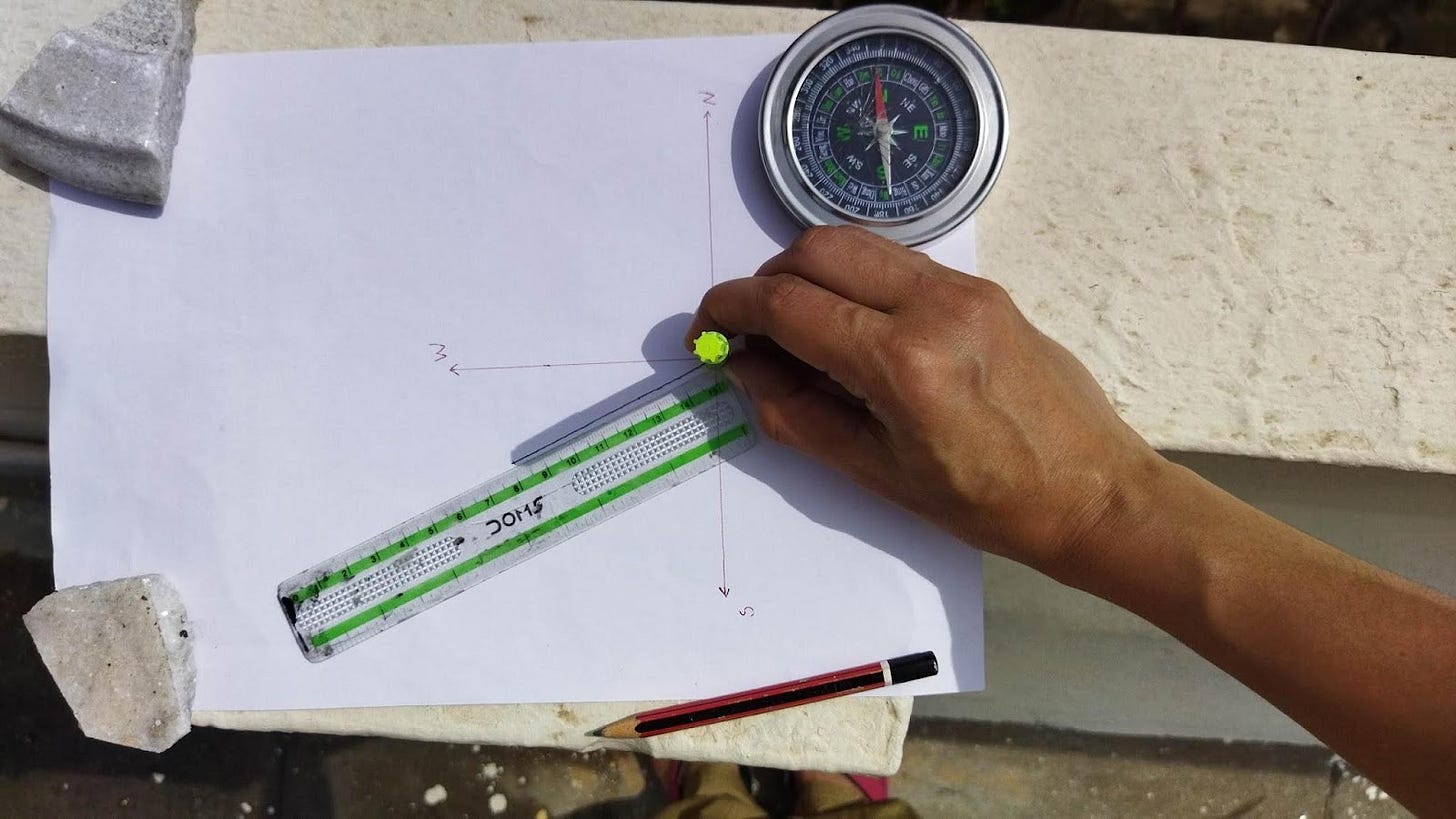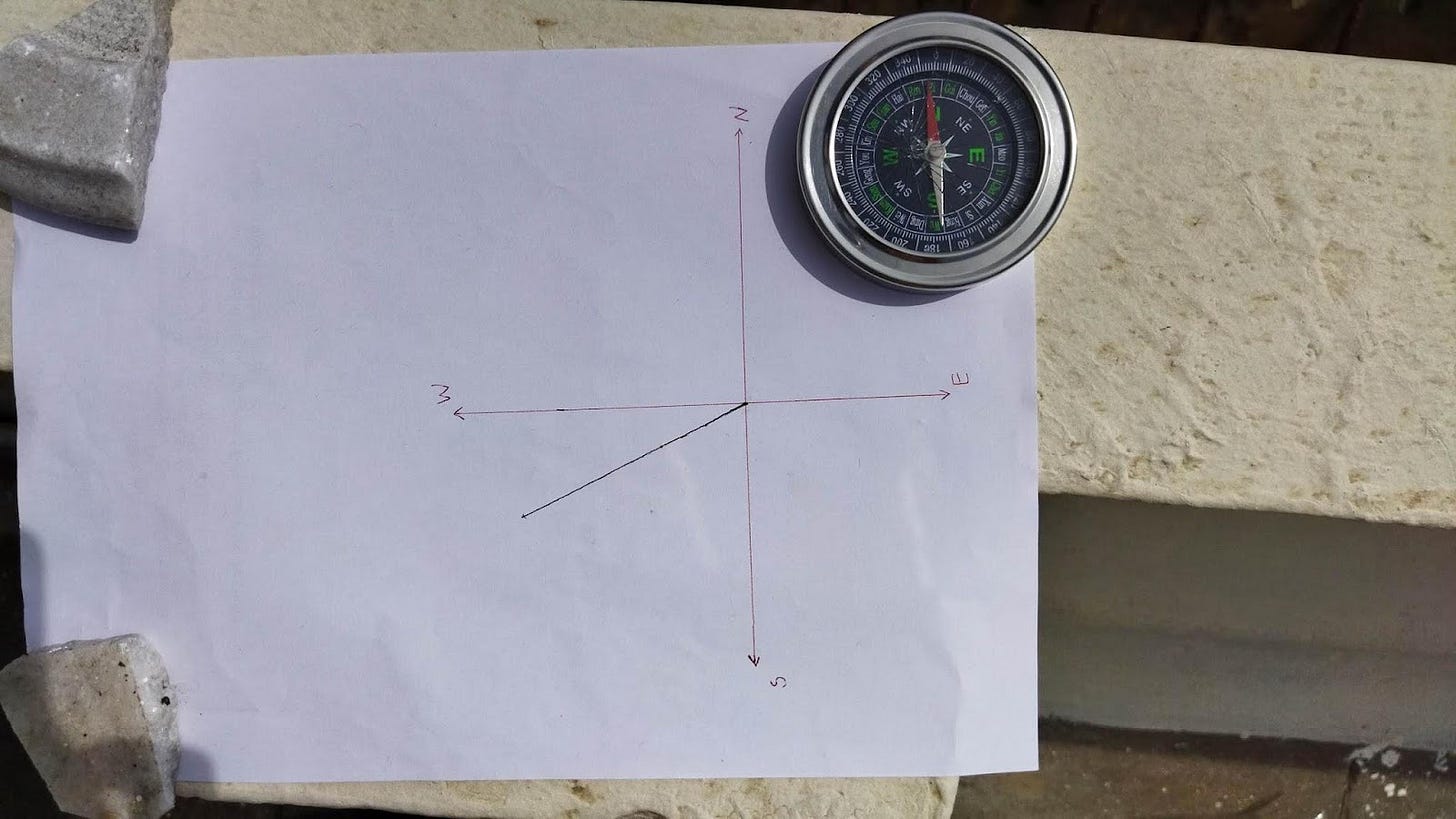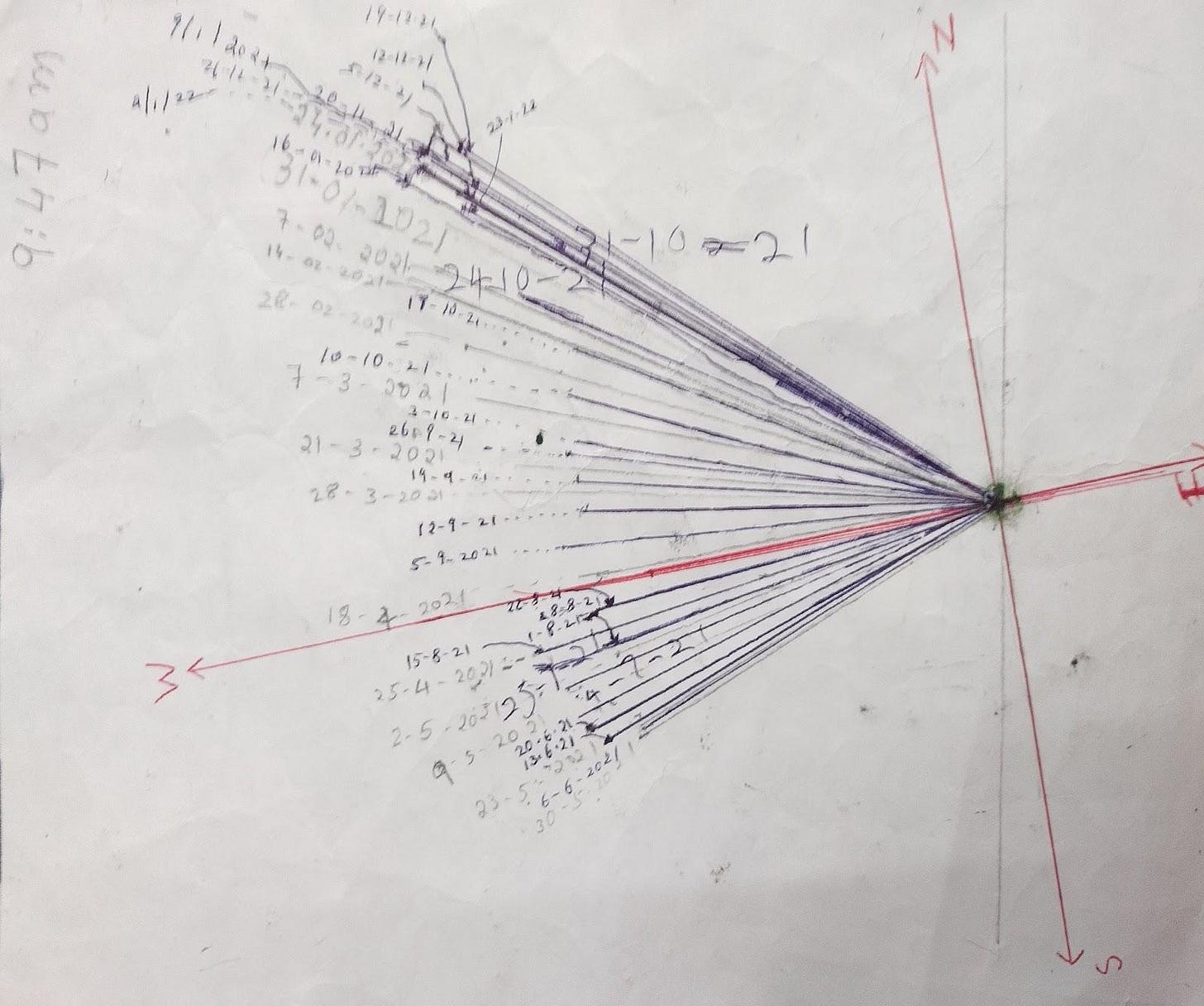Shadows can be used for many things. Our ancestors used shadows to measure time. Some like to experiment with shadow puppetry. They can even be used to study the position of the Sun. The position of the Sun changes both the length and direction of the shadow. The position of the Sun is determined by the Earth’s orbit and the time of day. We created an experiment to study the movement of the Earth around the Sun using shadows. We decided to observe the movement of the Earth around the Sun by observing the shadow of a pen, the Sun cast.
What apparatus is used for solar observation?
Pen (8.7 cm)
paper
ruler
pencil
eraser
Protractor
Blue pen
Fig 1.
When was the solar observation conducted?
The observation was conducted every Sunday at 9:45am from the 24th of January 2021 till the 16th of January 2022.
Where was the observation conducted?
This observation was conducted on the terrace of our house in Attiguppe; a location in Bangalore, Karnataka, India in the northern hemisphere (at 12.9565 o N and 77.532 o E )
How was the solar observation conducted?
A place was identified on our house terrace where we usually get direct sunlight throughout the year. The observation was conducted every Sunday at 9:45am by placing a paper in the fixed place on our terrace.
Fig. 2
A pen was placed on a fixed point on the paper.
Fig. 3
A line of the same length as the shadow was drawn on the shadow of the pen.
Fig. 4
Fig. 5
What did we record in each observation?
We recorded the shadow of the pen, the direction in which it was facing and the length of the shadow.
Our Observation
On the day we started, the shadow’s length was 11.2 cm and was pointing in the direction W41o N. How the directions are measured is shown below.
Fig. 6
In the following weeks, the shadow started moving towards the south and the shadows decreased in length. For example the next shadow was pointing in the direction W34o N with the length of 10.5 cm and so on. The shadows then continued moving south till 30th May 2021. On that day the shadow was 7 cm long and was pointing in the direction W21o S. From that day on, the shadows started moving towards the north and increased in size. The longest shadow was observed during December. Its length was 11.3 cm pointing W41o N.
Our complete observation over the year is shown in diagram below
Fig. 7
Fun fact!
Most of the shadows are pointing towards the North so the sun must be in the South. That is why most solar panels in the northern hemisphere face south.
The Pattern
Period
Observation
Jan-May 2021
The shadows started moving south. We recorded long shadows initially, which went on decreasing in length.
June-Aug 2021
The shadows started moving north. We recorded slightly longer shadows.
Sep-Oct 2021
The shadows continued to move towards the north. During this period the shadows were short.
Nov-Dec 2021
The shadows were pointing north. The length of the shadows went on increasing
The Inference
Now that we have made our observation, let us try to find the reason behind these patterns. The two things that determine the length of the shadow and the direction of it are the revolution of the Earth and the tilt of the Earth’s axis.
The axis of the Earth is tilted by 23.5o . Because of this, only one half of the Earth, also called a hemisphere, faces the Sun. The hemisphere of the Earth facing the Sun receives longer hours of sunlight and has summer. The hemisphere of the Earth facing away from the Sun gets shorter hours of sunlight and has winter. Fig. 8 shows how the summer and winter are caused in the northern hemisphere.
The solstices are the point where the sun either appears to be at its highest or lowest in the sky. The Solstices occur when the earth’s tilt towards or away from the sun is at a maximum. The solstices occur at the equator on 21st June and 21st December.
Fig. 8 Image - Encyclopaedia Britannica
During summer and monsoon the Sun is higher up in the sky and in winter it is lower in the sky; being higher or lower in the sky does not mean that the Sun is farther or nearer to the earth. When the Sun is higher up in the sky, a shorter shadow is formed (see the picture of the tree below, Fig.9). When it is low in the sky a longer shadow is formed.
Fig. 9 Image - https://www.nagwa.com/pt/worksheets/980140349017/
Why did we record long shadows decreasing in length from January to May ?
We recorded long shadows in January as the north pole was facing away from the Sun. During the next few months, the length of the shadows decreased as the north pole started to turn slowly towards the Sun.
Why did we record slightly longer shadows from June to August compared to the summer months even though the North Pole was tilted towards the Sun?
We recorded slightly longer shadows from June to August compared to the summer months even though the North Pole was tilted towards the Sun because in these months the Earth’s orbit is farthest from the sun, close to the Aphelion position. (refer picture below)
Fig 10
September to October, why did we get short shadows?
From September to October, the North-Pole continued to face the sun, but the Earth was close to the sun. So the sun was high up in the sky. Hence we got shorter shadows. Refer picture above.
From November to December the shadows increased, why?
From November the North-Pole started tilting away from the sun. So the sun was lower in the sky. Hence, the shadows increased from November to December. This was the period when we got the longest shadow close to the winter solstice, the point where the sun appears to be at its lowest in the sky due to the earth’s tilt away from the sun being at a maximum.
These dates may slightly vary depending on the latitude.
Conclusion
We have now come to the end of the observation. We now know that simple shadows can be used to measure the revolution of the earth around the sun.
We have learnt more about the orbit of the earth and the Perihelion and Aphelion positions. The same experiment can be conducted at home if you have sunlight and patience. The results will not be useful if not conducted for an entire year. You may get slightly different results, but they will definitely be interesting. With that I conclude this document. Hope you now know something that you didn’t!

